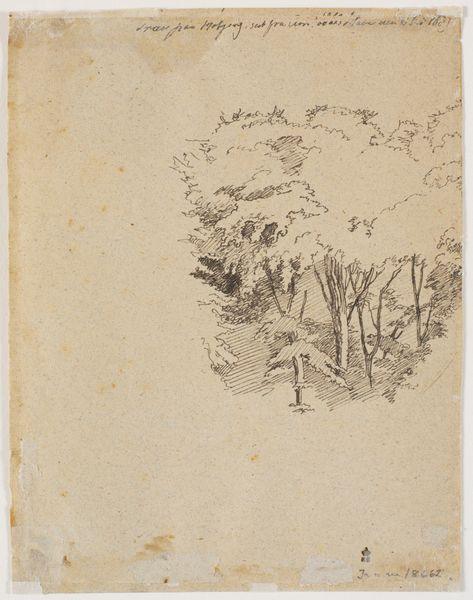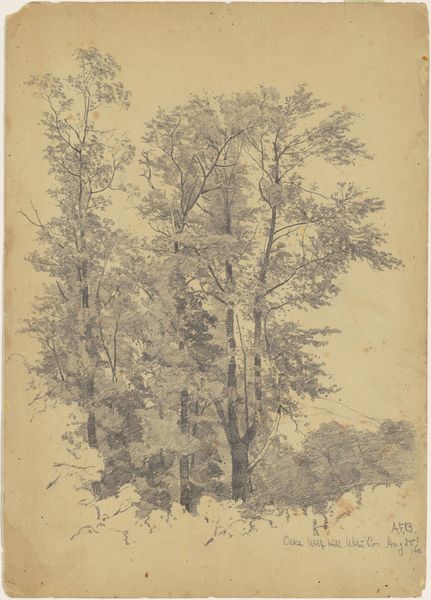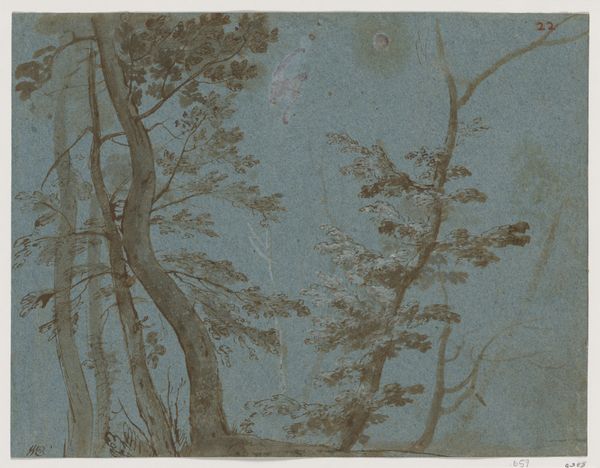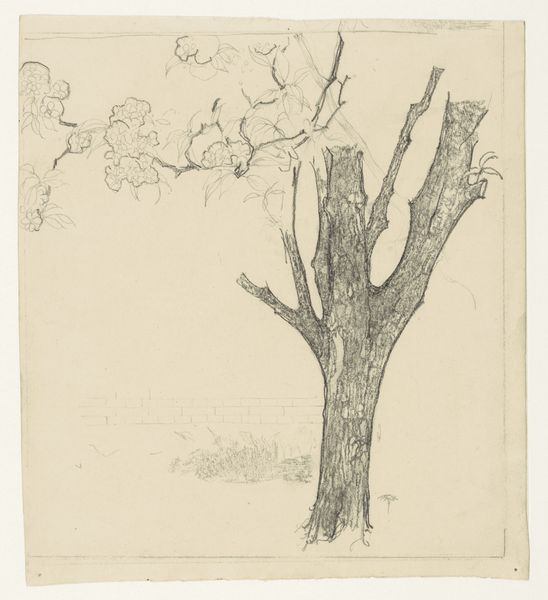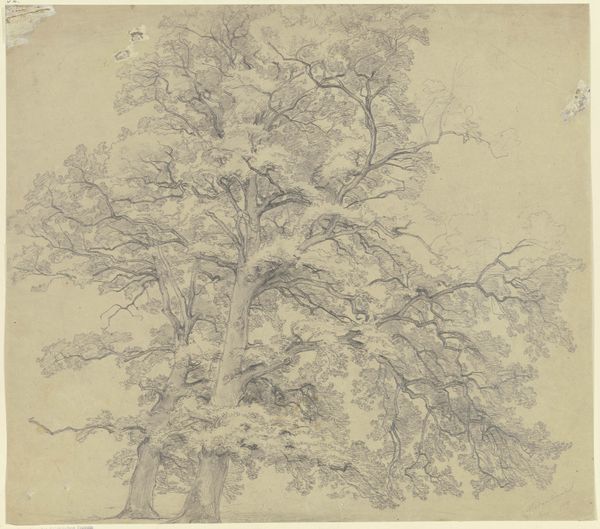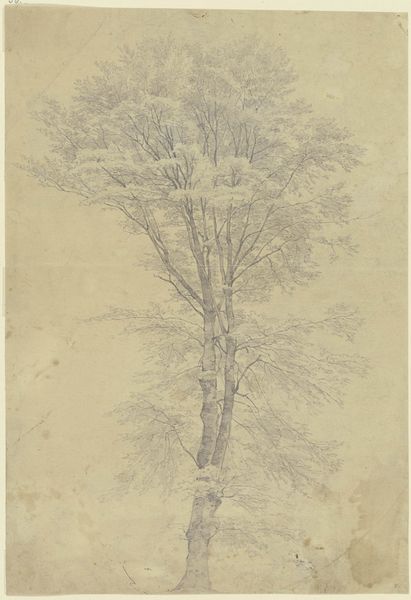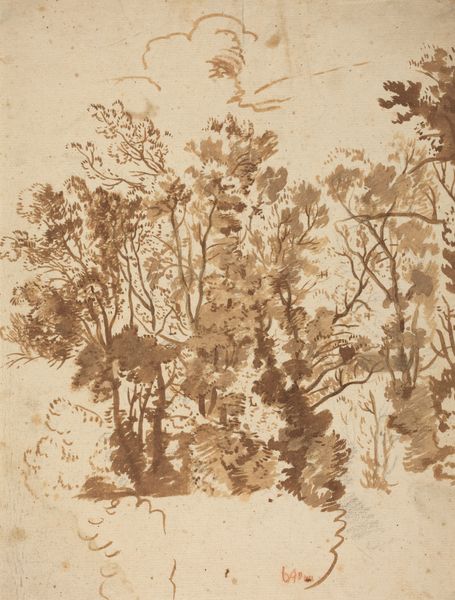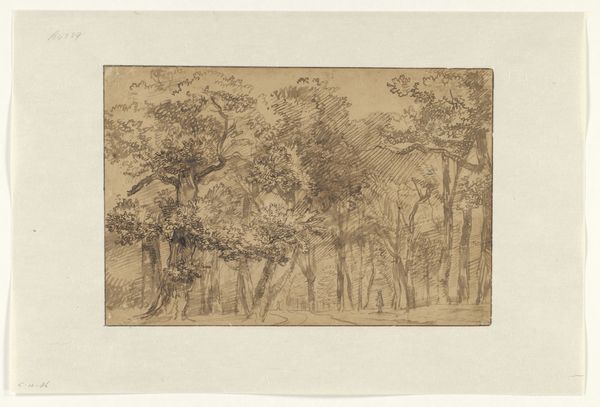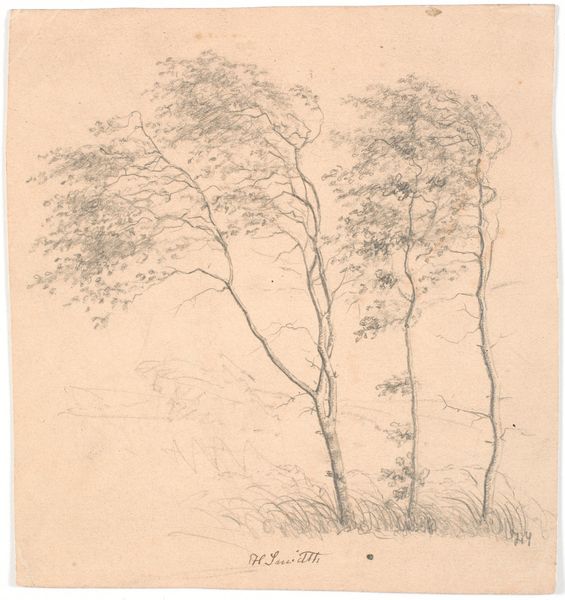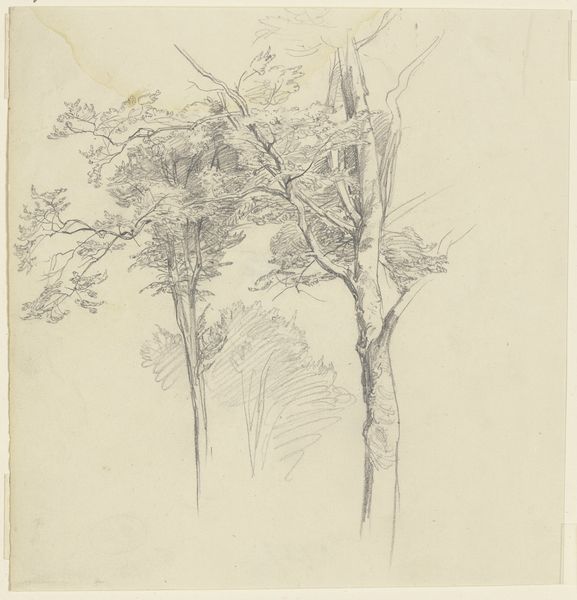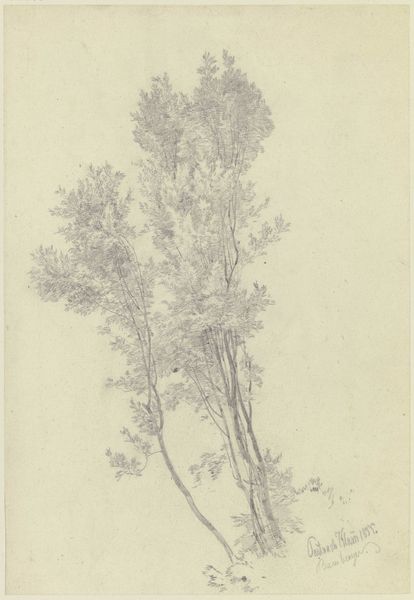
drawing, plein-air, watercolor, ink
#
drawing
#
plein-air
#
landscape
#
etching
#
watercolor
#
ink
#
ink colored
#
sketchbook drawing
#
watercolour illustration
#
watercolor
#
realism
Dimensions: 168 mm (height) x 158 mm (width) (bladmaal)
Curator: This is "Trægruppe," or "Group of Trees," a work created by C.A. Lorentzen between 1746 and 1828. It's rendered in ink and watercolor, a lovely example of plein-air drawing from the era, held here at the Statens Museum for Kunst. Editor: Immediately, I'm struck by the immediacy of it. The simple, almost casual application of ink and watercolor captures a specific stand of trees bathed in light. It feels almost like a document, like a botanical survey. Curator: Indeed. Its value lies in precisely that relationship to documentation, but also in revealing the networks of patronage, taste and power at work in commissioning landscape sketches for the elite. We see how these ostensibly ‘natural’ depictions were, in reality, actively shaping a social imaginary about nature itself. Editor: And considering the materials, ink and watercolor allowed for a relatively quick process, supporting artistic field work and explorations. The visible layering indicates a process of decision-making on the page, each tree defined by specific textures of wash and varied densities of marks. Do we know if it was intended as a finished work, or preparatory study? Curator: Good question. I see it as reflective of a culture of observation emerging at the time; and there is the growing market for landscape studies feeding into collections both public and private. Editor: I agree, and in the art world context, its role is to act almost as raw data. Landscape became almost like a raw material for artists. You collect views to incorporate later, shaping what is later understood as nature within landscape art. Curator: The piece embodies the transition, if you will, from courtly patronage towards more ‘open’ market-based practices that have evolved into the institutions of art as we know it. These nature sketches served multiple purposes within complex, evolving structures of power and class. Editor: "Trægruppe," offers a unique glimpse into 18th-century practices of production, the art market and art's role in social hierarchies of the day. Curator: Absolutely, reminding us how images shaped the consumption and perception of 'nature' in an age of exploration.
Comments
No comments
Be the first to comment and join the conversation on the ultimate creative platform.
